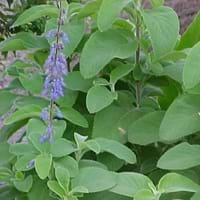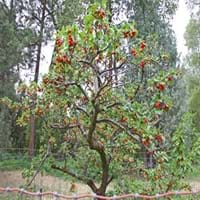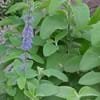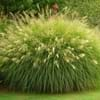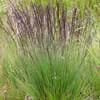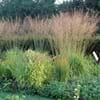Life Span
Perennial
Perennial
Type
Flowering Plants, Herbs
Fruit
Origin
Not Available
Hybrid origin
Types
Not Available
Fruit
Number of Varieties
Not Available
Habitat
Not Available
Temperate Regions
USDA Hardiness Zone
Not Available
4-8
AHS Heat Zone
Not Available
8-1
Sunset Zone
Not Available
A2, A3, 1a, 1b, 2a, 2b, 3a, 3b, 4, 5, 6, 7, 8, 9, 14, 15, 16, 17
Habit
Clump-Forming
Oval or Rounded
Flower Color
Lavender
White
Flower Color Modifier
Bicolor
Bicolor
Fruit Color
Not Available
Red, Dark Red
Leaf Color in Spring
Light Green
Dark Green
Leaf Color in Summer
Green
Dark Green
Leaf Color in Fall
Green
Dark Green
Leaf Color in Winter
Green
Light Green
Leaf Shape
Toothed
Simple lobed or unlobed
Plant Season
Summer, Fall
Spring, Summer
Sunlight
Partial shade, Partial Sun
Full Sun, Partial Sun
Type of Soil
Loam, Moist
Loam
The pH of Soil
Neutral, Slightly Alkaline
Acidic, Neutral
Soil Drainage
Well drained
Well drained
Bloom Time
Early Summer, Late Summer
Early Spring, Spring
Tolerances
Not Available
Drought
Where to Plant?
Ground
Ground
How to Plant?
Cuttings
Semi-hardwood and hardwood cuttings
Plant Maintenance
Medium
Medium
Watering Requirements
Do not water excessively
Keep ground moist, Use Mulches to help prevent water loss during hot and windy weather
In Summer
Ample Water
Lots of watering
In Spring
Average Water
Moderate
In Winter
Moderate
Average Water
Soil pH
Neutral, Slightly Alkaline
Acidic, Neutral
Soil Type
Loam, Moist
Loam
Soil Drainage Capacity
Damp
Well drained
Sun Exposure
Partial shade, Partial Sun
Full Sun, Partial Sun
Pruning
Remove damaged leaves, Remove dead leaves
Remove damaged leaves, Remove dead branches, Remove dead leaves
Fertilizers
10-10-10 diluted liquid fertilizer, All-Purpose Liquid Fertilizer
All-Purpose Liquid Fertilizer
Pests and Diseases
Leaf spot, Root knot nematode, Root rot, Verticillium Wilt
Birds
Plant Tolerance
Not Available
Drought
Flower Petal Number
Single
Single, Double
Foliage Texture
Fine
Medium
Foliage Sheen
Matte
Glossy
Attracts
Not Available
Birds
Allergy
Cough, flushing of face, Low blood pressure, restlessness, stinging, Throat itching, tremor
Anaphylaxis, gastro-intestinal problems, Itchiness, Skin irritation
Aesthetic Uses
Showy Purposes, Used for making hedges
Beautification, Bouquets, Informal Hedge, Landscape Designing, Showy Purposes, Wild gardens
Beauty Benefits
No Beauty Benefits
Not Available
Environmental Uses
Air purification
Air purification
Medicinal Uses
convulsions, Heart problems, painful urination, spasmodic pain
anti-inflammatory, Anti-oxidant, Gout, Insomnia, Soothing and relieving pain
Part of Plant Used
Leaves, Root, Seeds
Flowers, Fruits
Other Uses
Employed in herbal medicine
Air freshner, Beneficial species for attracting pollinators, Cake, Edible syrup, Oil is used in perfume, soaps, creams, etc., Used to make juice
Used As Indoor Plant
No
No
Used As Outdoor Plant
Yes
Yes
Garden Design
Container, Mixed Border
Edible, Fruit / Fruit Tree, Mixed Border
Botanical Name
Plectranthus barbatus
PRUNUS cerasus
Common Name
Coleus forskohlii, Indian coleus
Pie Cherry, Sour Cherry, Tart Cherry
In Hindi
पत्थरचूर
Sour cherry
In German
Harfensträucher
Sauerkirsche
In French
Coléus à forskoline, Coléus de l'Inde
Prunus cerasus
In Spanish
Coleus forskohlii
Prunus cerasus
In Greek
Coleus Forskohlii
Sour cherry
In Portuguese
Boldo-de-jardim, Boldo-da-terra
Ginja
In Polish
Coleus Forskohlii
Wiśnia pospolita
In Latin
Coleus Forskohlii
Prunus cerasus
Phylum
Magnoliophyta
Tracheophyta
Class
Magnoliopsida
Magnoliopsida
Family
Lamiaceae
Rosaceae
Clade
Angiosperms, Asterids, Eudicots
Angiosperms, Eudicots, Rosids
Tribe
Not Available
Not Available
Subfamily
Not Available
Not Available
Number of Species
Not Available
Properties of Coleus Forskohlii and Sour Cherry
Wondering what are the properties of Coleus Forskohlii and Sour Cherry? We provide you with everything About Coleus Forskohlii and Sour Cherry. Coleus Forskohlii doesn't have thorns and Sour Cherry doesn't have thorns. Also Coleus Forskohlii does not have fragrant flowers. Coleus Forskohlii has allergic reactions like Cough, flushing of face, Low blood pressure, restlessness, stinging, Throat itching and tremor and Sour Cherry has allergic reactions like Cough, flushing of face, Low blood pressure, restlessness, stinging, Throat itching and tremor. Compare all the properties and characteristics of these two plants. Find out which of these plant can be used as indoor plant. If you are interested to decorate your house and garden, find out aesthetic uses, compare them and select the plant which will beautify your surrounding. Along with beautification, try comparing medicinal and edible uses of Coleus Forskohlii and Sour Cherry and you can choose the plant having best and most benefits.
Season and Care of Coleus Forskohlii and Sour Cherry
Season and care of Coleus Forskohlii and Sour Cherry is important to know. While considering everything about Coleus Forskohlii and Sour Cherry Care, growing season is an essential factor. Coleus Forskohlii season is Summer and Fall and Sour Cherry season is Summer and Fall. The type of soil for Coleus Forskohlii is Loam, Moist and for Sour Cherry is Loam while the PH of soil for Coleus Forskohlii is Neutral, Slightly Alkaline and for Sour Cherry is Acidic, Neutral.
Coleus Forskohlii and Sour Cherry Physical Information
Coleus Forskohlii and Sour Cherry physical information is very important for comparison. Coleus Forskohlii height is 40.00 cm and width 30.00 cm whereas Sour Cherry height is 300.00 cm and width 300.00 cm. The color specification of Coleus Forskohlii and Sour Cherry are as follows:
Coleus Forskohlii flower color: Lavender
Coleus Forskohlii leaf color: Light Green
Sour Cherry flower color: White
- Sour Cherry leaf color: Dark Green
Care of Coleus Forskohlii and Sour Cherry
Care of Coleus Forskohlii and Sour Cherry include pruning, fertilizers, watering etc. Coleus Forskohlii pruning is done Remove damaged leaves and Remove dead leaves and Sour Cherry pruning is done Remove damaged leaves, Remove dead branches and Remove dead leaves. In summer Coleus Forskohlii needs Ample Water and in winter, it needs Moderate. Whereas, in summer Sour Cherry needs Lots of watering and in winter, it needs Average Water.
